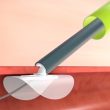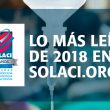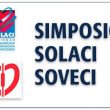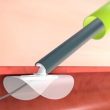The II International Symposium on Innovations in the Treatment of Coronary Artery Disease and Structural Heart Disease will take place on July 31st, 2019 at the Syrian-Lebanese Hospital in São Paulo. This event seeks to provide a better understanding of indications and clinical and interventional strategies for complex heart conditions, such as left main coronary...
The Most Read Scientific Articles in Interventional Cardiology
1- Long-Term Foramen Ovale Closure after Cryptogenic Stroke Patent foramen ovale closure is the standard treatment for cryptogenic stroke patients. However, there are is little information on its long-term evolution. Read more 2- Descending Thoracic Aortic Aneurysms: Is There a New Plan A? The last available evidence suggests that open surgery should be the...
EXCEL Outcomes: PCI vs CABG in Patients with Prior Cerebrovascular disease
Most certainly, as we read this title, we imagine the conclusion (as does the editor): patients with prior cerebrovascular disease (CEVD) benefit from a less invasive revascularization strategy, such as PCI. However, the EXCEL outcomes tell us that patients with left main coronary artery disease (LMCAD) and a history of CEVD will not benefit from...
TAVR Learning Curve and Volume-Outcomes Relationship Plateau
Every operator keeps track of their cases. Have they reached their potential or are they still learning and improving their technique? After 1000 procedures, can we expect them to have better results than someone that has only done 500? Prior studies have reached conflictive results and consequently the relationship between learning curve and volume-outcomes remains...
Percutaneous Closure Systems Are Safe in TAVR and Aneurysms
Courtesy of Dr. Carlos Fava. Currently, one of our medical challenges is to conduct procedures requiring access with large introducer sheaths in a simpler way, without requiring surgical intervention and closing with percutaneous devices while maintaining procedural quality and safety. There are several devices, but they require a learning curve and the only information available comes...
The 10 most consulted articles at SOLACI during 2018
1- New High Blood Pressure Guidelines The wait is finally over: the high blood pressure guidelines that have been in the works for the past 3 years saw the light of day at the American Heart Association (AHA) 2017 Scientific Sessions. Read more 2- The 10 Commandments of ESC’s New STEMI Guidelines The authors...
SOLACI@SOVECI Symposium at the XVI Venezuelan Congress on Interventional Cardiology
The XVI Venezuelan Congress on Interventional Cardiology will take place next Saturday, December 1st, 2018, at La Trinidad Teaching Medical Center (Caracas). SOLACI is honored to contribute with the organization of this event by means of two symposiums addressing important issues related with Interventional Cardiology on Structural Heart Disease. Here is the detailed information for...
DEFENSE-PFO: High Risk PFO Closure Reduces Combined Events and Stroke Risk
High risk patent foramen ovale closure PFO resulted in reduced stroke, vascular death and bleeding risk. Recent reports have shown a favorable role of PFO in patients with cryptogenic stroke, though with some unclear results, which immediately raised the questions: Who are the optimal candidates for this procedure, and who will see no benefit? ...
Significant Association Between Suprarenal Fixation of Endoprostheses and Renal Dysfunction
According to this meta-analysis, soon to be published in Eur. J. Vasc. Endovasc. Surg., endovascular abdominal aortic aneurysm repair prostheses with suprarenal fixation do not alter significantly the glomerular filtration rate at one year from device implantation. However, we should acknowledge that long-term outcomes are still unknown. The literature is inconsistent as regards the definition...
Constrictive Pericarditis After Pericardiocentesis
All interventional cardiologists must be able to perform a pericardiocentesis. Whether we deal with a chronic total occlusion, a supposedly simple coronary angioplasty (we all have witnessed the perforation of a supposedly risk-free coronary artery), or a transcatheter aortic valve replacement (whose rise gave us another significant source of tamponades), we must all be ready...









